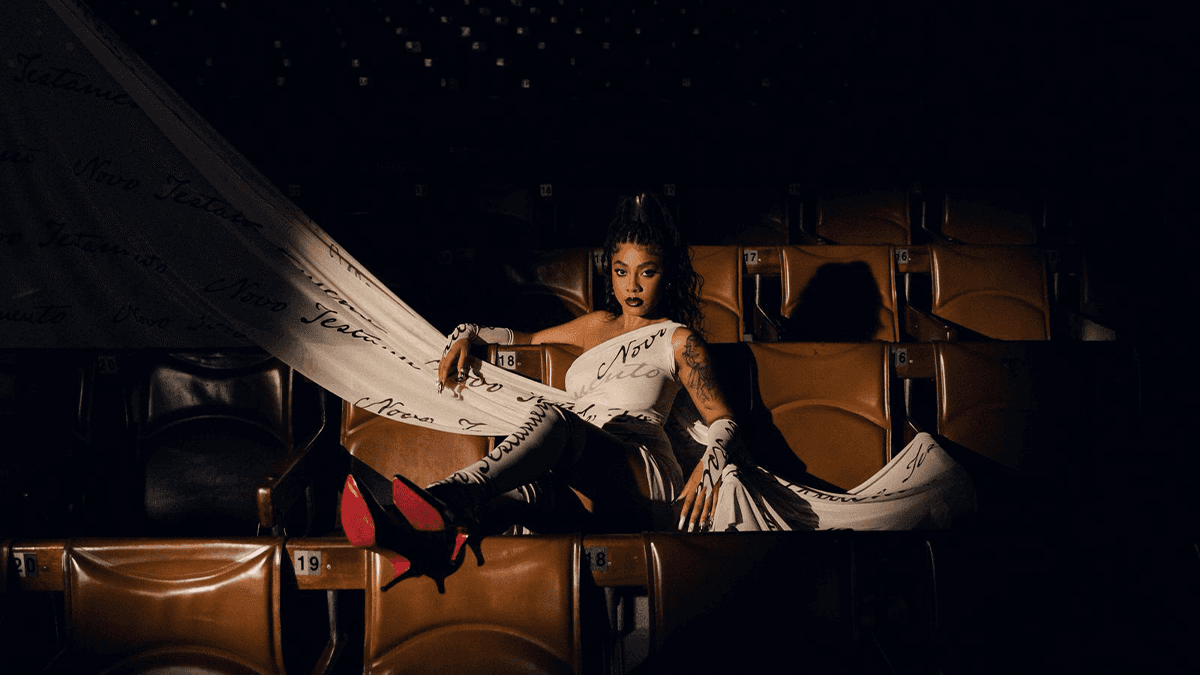VERNISSAGE: Rog announces the first appearance of Muzikstown in Paris
The carioca painter, who represents the narratives of peripheral everyday life and the Rastafari movement, will present a show of his new works for the first time in Paris. The exhibition takes place at Jocelyne (Paris 18), in partnership with the artistic collective Muzikstown from Rio de Janeiro, which transforms the space into a true meeting point between visual art and tropical sounds.

The musical program featured a special edition of the program "Lilly Liaz Invites," curated by the host Lily and exclusive sets from guest DJs.
We chatted a bit with ROG about his contact with the artistic world and the impact of Brazilian culture in Paris. Check it out below:
How did your interest in the artistic world come about? Was it a passion that accompanied you since childhood or something that developed throughout your personal and professional journey?
My interest in the artistic world began when I was 10 years old. During this period I began to experience many losses of family members and acquaintances involved in organized crime in the Morro do Estado community in Niterói, where many of them were losing their lives in this illusion of the Babylonian system of trafficking that chains young people all over Brazil – especially in Rio de Janeiro. My parents, Tuta and Kátia, upon seeing my interest in painting amidst so much chaos, made every effort in the world to save me through art.

At what moment in your life did you decide to dedicate yourself entirely to art and start a career in this field? Was there any event or significant experience that motivated you?
The significant fact that determined that it would be art that changed the course of history was when I had a very close friend unjustly imprisoned, accused by the Niterói police of crimes he did not commit, where together with other friends and family, we organized protests in the city. Everything was televised live across Brazil, and it was through protest paintings, drums, and songs of freedom that we managed to prove Danillo Felix's innocence. And to say that the system is so corrupt and dirty that it can destroy lives simply for being black.

Your works depict the everyday life of the carioca peripheries and especially celebrate Rastafari culture. How do these cultural and social elements influence and enrich your creative process?
My creative process is born in the alley of the favela, on the slab of creation, where an entire community defends itself in various ways every day to stay alive and bring food to the table. I paint the faces and moments of each resident and immortalize the reality that exists there, so that the identity of these people is not lost and their voices are heard by all. It was with Rastafari movements that I found strength, peace, and unity, and learned to defend myself from the Babylonian system. Rastafari does not fight; it defends itself daily from the evil of Babylon.

We know that music is also an extension of your work, especially with the collective MUZIKSTOWN and your partnership in the duo with Lily. How do you integrate the purposes and messages of your musical projects?
Muzikstown is born from the foundation of cultural resistance, where we present music as a tool for unity, joy, and wisdom. My songs are prayers, protest, and social shock through Reggae, Dub, and Dancehall. The partnership with Lilly Liaz has been fundamental to expand and connect the international universe with Brazil and present our best to the world.

Thinking about the Brazilian cultural heritage, what do you believe is the role and importance of Brazilian art in France, both for the Brazilian community and for the local audience?
This cultural movement in France is of utmost importance where I can inspire other people, especially young people from the Brazilian periphery, to believe in their dreams and say that you are capable of being everything that they don’t want you to be, free. For the local audience, being able to tell my story and those of people who have been erased but are eternal in every song and paint. And to say that our history is similar, especially for immigrants and their children.

See others like this





